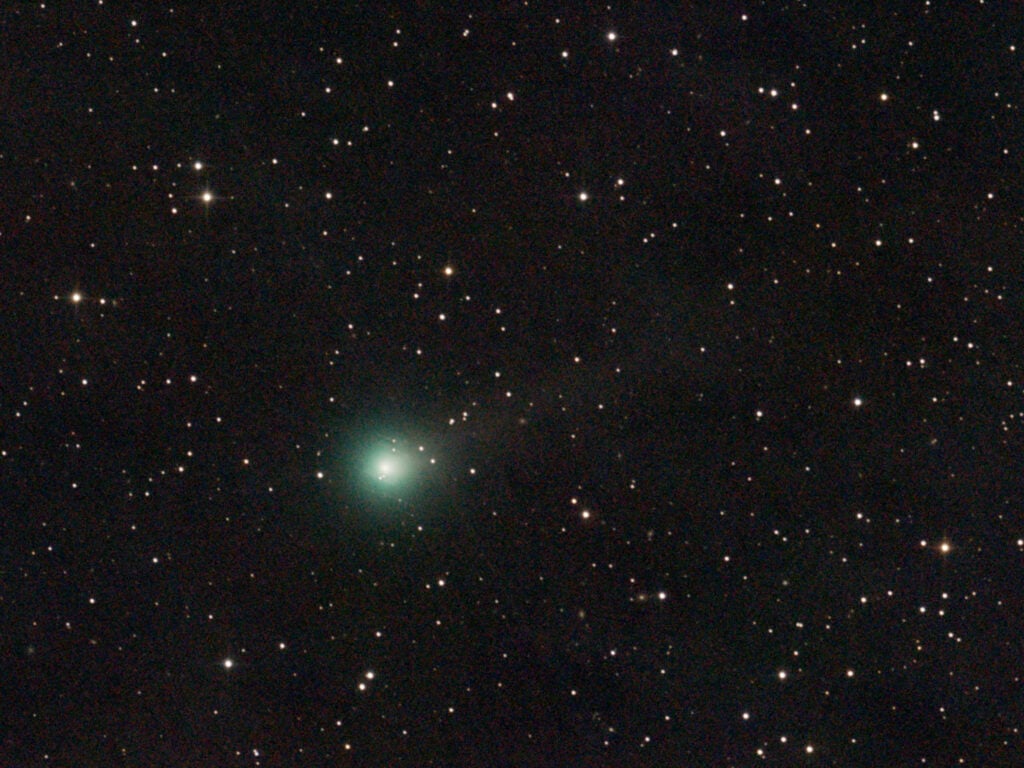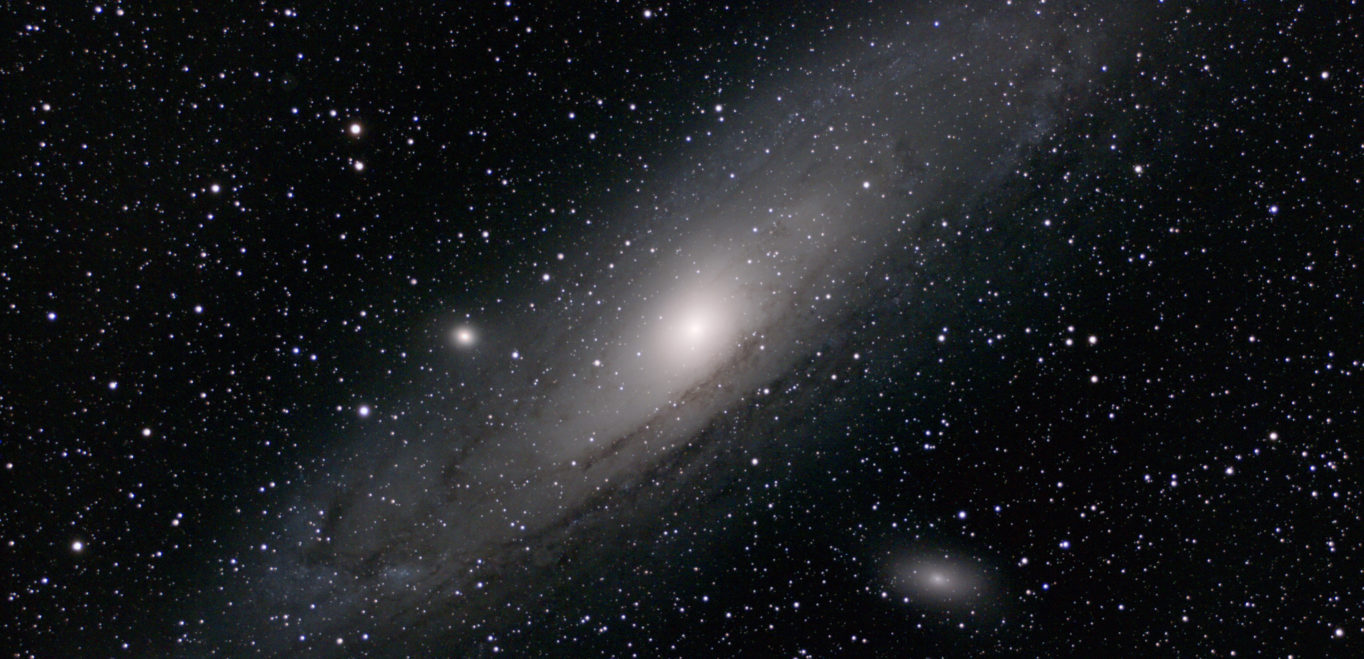Welcome to this month’s update to find out what’s in the night sky for October.
In the Elan Valley International Dark Sky Park, the Milky Way can be seen from the south-western horizon as darkness falls. It will look at its best from 20:39 onwards at the beginning of the month, when astro-darkness begins and continues until 05:25 in the morning. At the end of the month, astro-darkness starts at 18:41 and ends at 05:12, providing over ten hours of dark sky, ideal for finding those faint fuzzies.
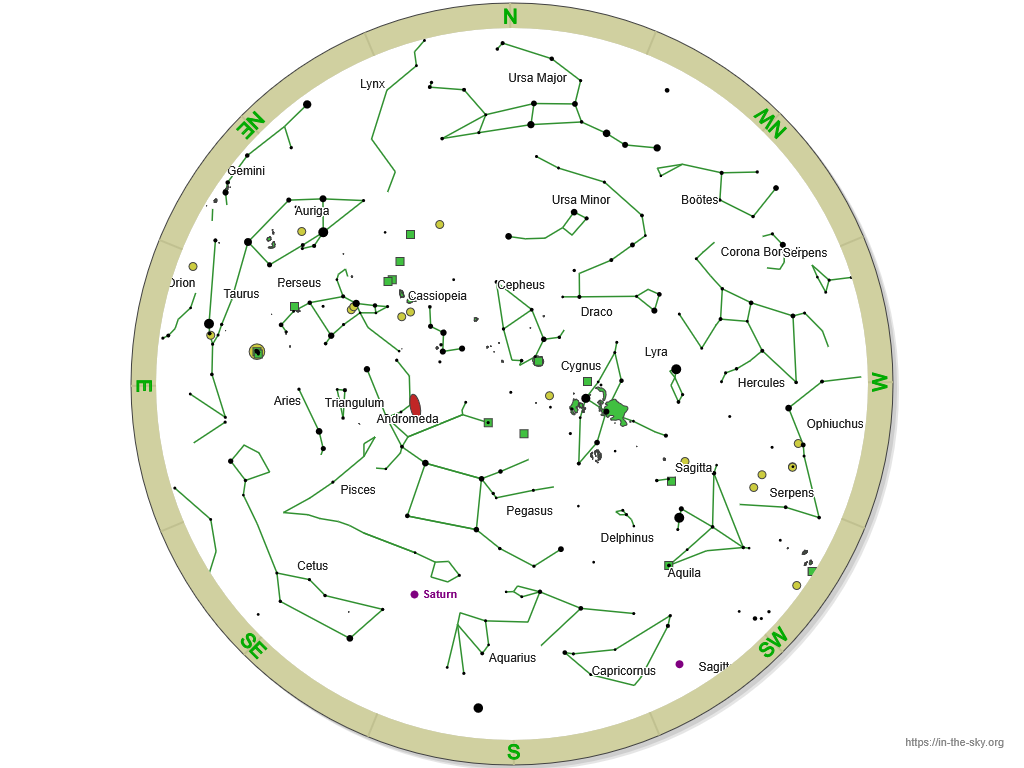
An all-sky view of the constellations from 10pm during October from in-the-sky.org
In the southern horizon sits the constellation of Aquarius, with the square of Pegasus above. Cygnus is still well-placed in the autumn southwestern sky. The summer constellations of Aquila, Hercules, Lyra and Corona Borealis starts to set in the west. The winter constellations of Auriga, Taurus, Gemini and Orion rise in the east. As it gets dark, you will spot a tight, small cluster of stars already present above the eastern horizon – that’s the Seven Sisters.
The Full Moon occurs on 7th October and the New Moon on 21st October.
Don’t forget the clocks go back one hour on the last Sunday of this month on 26th October.
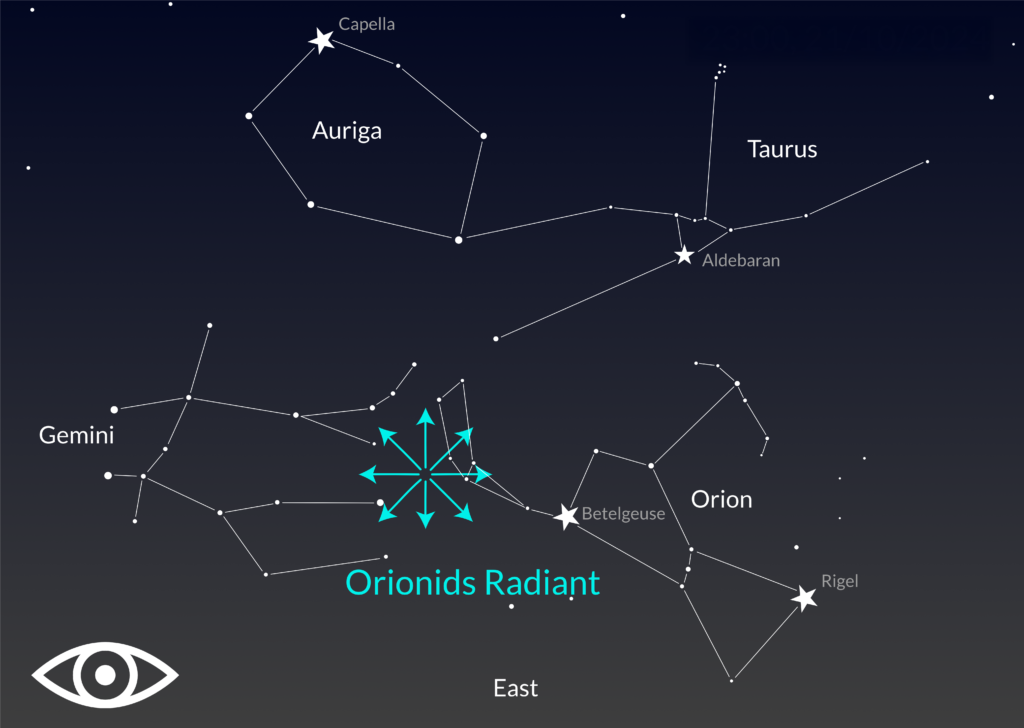
Orionids Meteor Shower
Originating from the most famous comet of all-time, Comet 1P/Halley, this meteor shower is active from 2nd October to 7th November and peaks during the night of 22nd October, radiating from the constellation of Orion.
Even though the number of meteors seen during peak zenithal rate is only around 15 per hour, it is still worth looking out for as the brighter ones look fantastic as they zip across the sky at very high speeds, leaving glowing trails that remain in the night sky for several seconds. There may even be some fireballs! Chances of spotting these shooting stars is high this year, in a dark sky during New Moon.
Credit: Sean Weekly
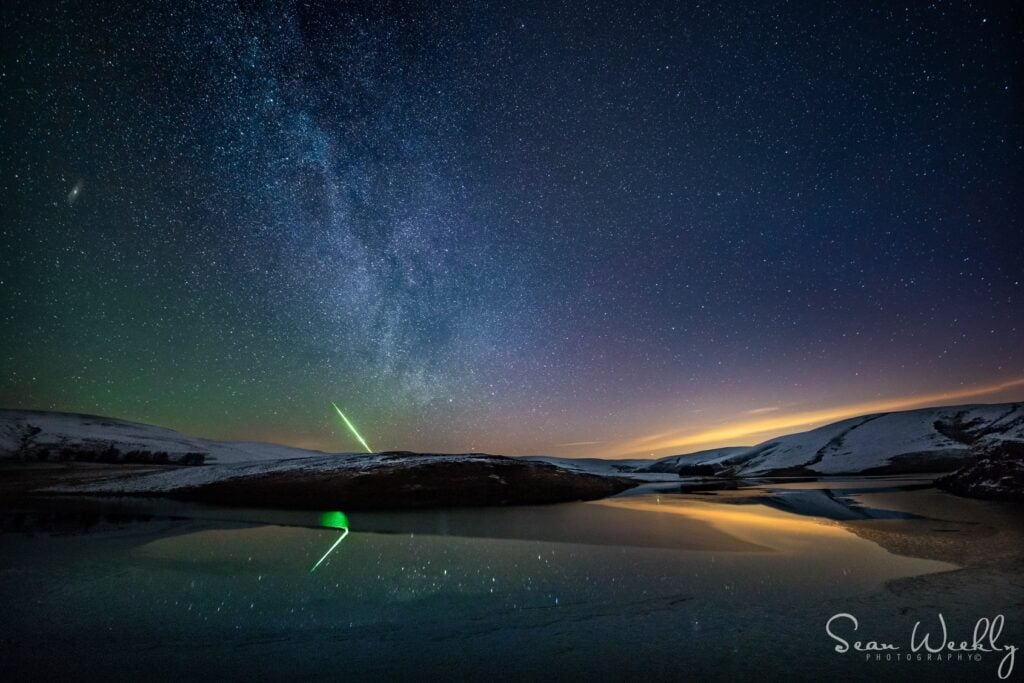

The Planets in October
Jupiter
Jupiter rises at around midnight in the north-east at the beginning of the month with a few of its moons visible through binoculars, looking like starry beads on a necklace.
Saturn
Saturn is an evening planet, situated near the constellation of Aquarius – the rings will still be thin but an 8-inch telescope will resolve up to eight of its moons.
Venus
Venus is a morning planet, rising around 2 hours before sunset, although will rise later each day as the month progresses and fades into the morning light.
Uranus
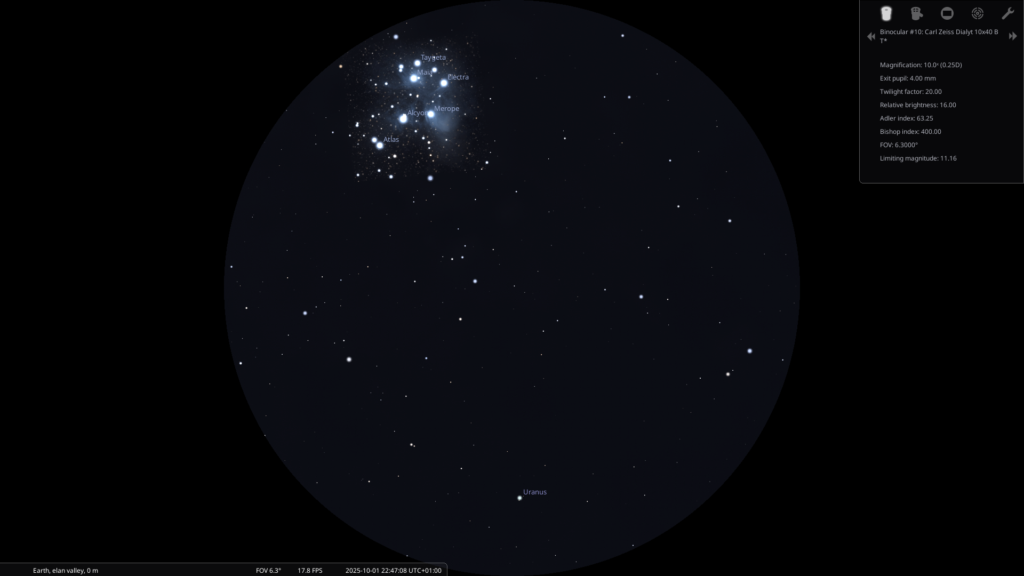
Uranus is easily found in the same field of view as the Pleiades Star Cluster, using 10×50 binoculars, appearing as a faint, starlike object, greenish in colour.
Credit: Stellarium
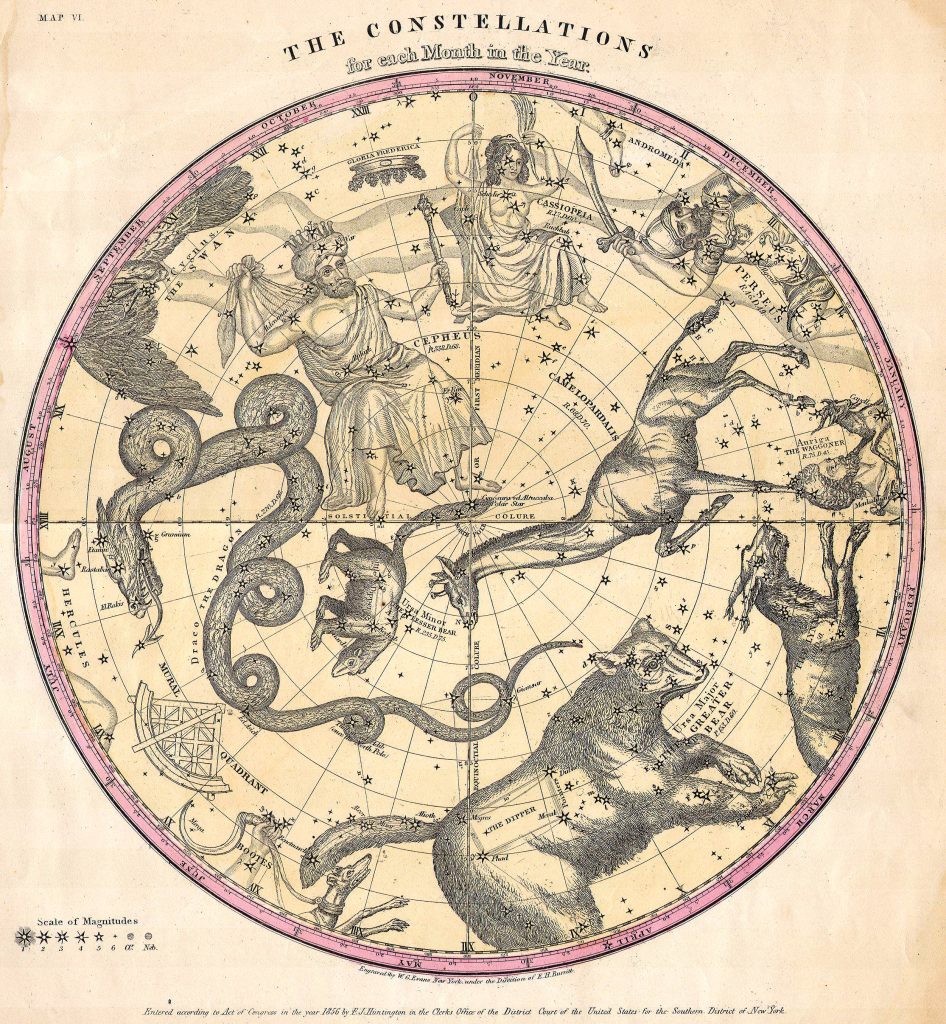
Constellation of the Month
Each month, we will feature a constellation and the mythology behind it.
There are 88 IAU recognised constellations in the night sky and around 36 that are observable in the northern hemisphere. Some of the names of the 88 IAU recognised constellations are several thousands of years old.
With the advent of science and rational thinking, and more of a focus on the observable world, stars are no longer used for the farming calendar, for navigation or conveying social or religious values.
Get outside and see if you can spot these constellations. The best time to see each constellation we feature is around 90 minutes after sunset.
Constellation of the Month – Andromeda and Pegasus
These constellations will be well-placed in the night sky during October and are one of only a few that are joined together by a single star.
At the upper left-hand corner of the Square of Pegasus lies the star Alpheratz – the constellations of Andromeda and Pegasus are linked by this star.
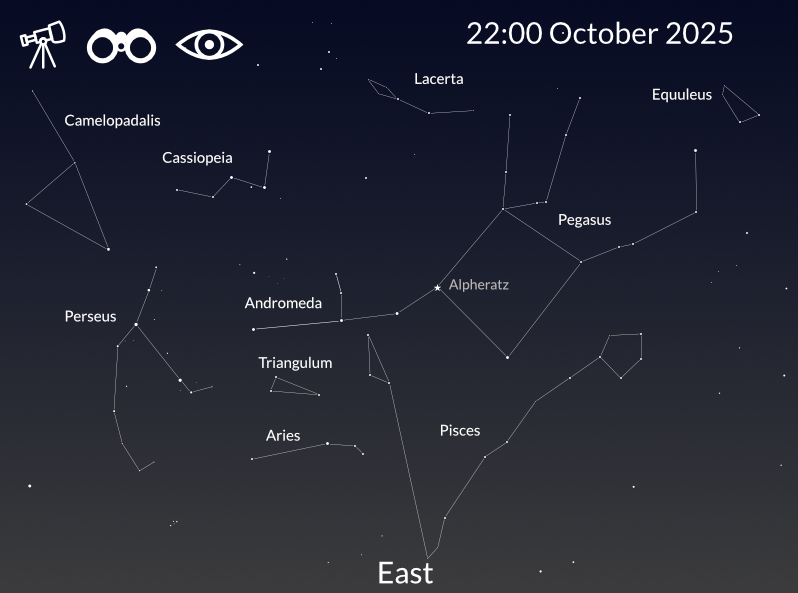
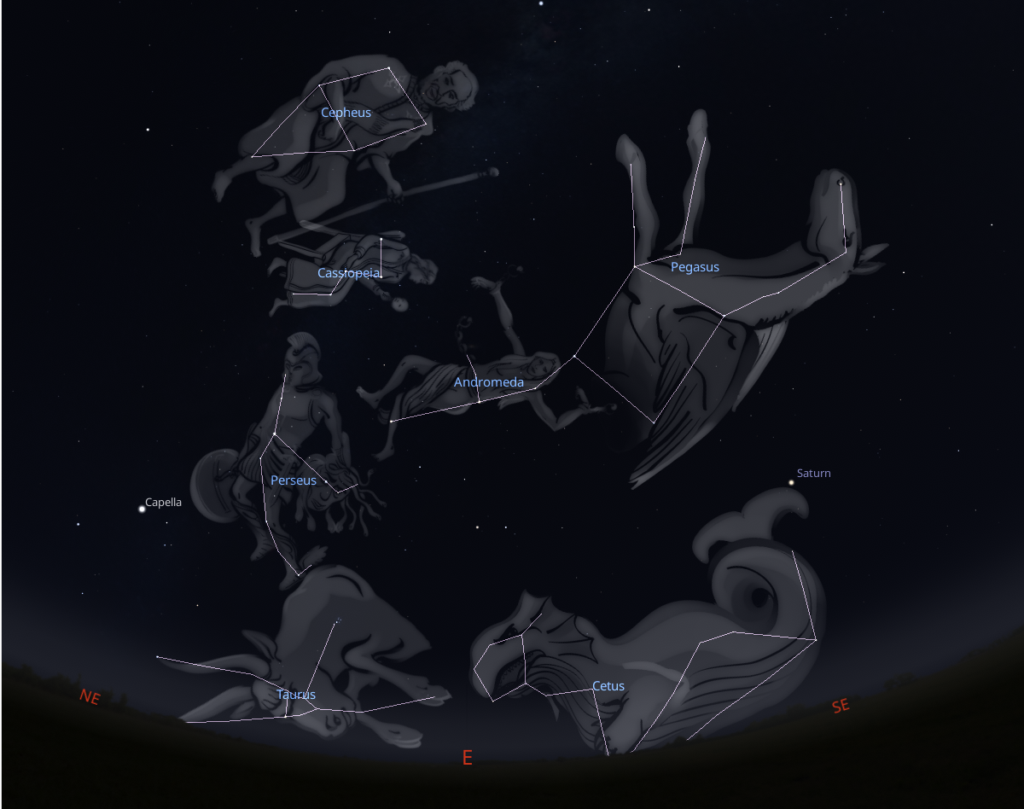
In Greek mythology, Andromeda was the beautiful daughter of Cassiopeia and Cepheus, king and queen of their kingdom. Cassiopeia boasted of her daughter’s natural beauty, which was said to exceed the beauty of the Nereid sea nymphs.
This angered the god of the sea Poseidon, who sent Cetus, the sea monster to emerge from the sea and destroy the kingdom.
Credit: Stellarium
Wanting to appease Cetus, the parents tied their daughter Andromeda to a rock by the sea. Andromeda cried out for help as the sea monster grew closer. The brave hero Perseus was returning from his quest to slay the Gorgon Medusa, flying on his winged horse Pegasus, and saw the plight of Andromeda, swooping down and rescuing her from the jaws of Cetus. They fell in love with each other and lived happily ever after.
As for Cassiopeia, Zeus and the other gods decided her fate as punishment for her pride, tying her to a chair and causing her to spin endlessly in the night sky, day and night for eternity. Cassiopeia is a circumpolar constellation, which means it never sets. The goddess Athena placed the rescue of Andromeda among the stars.
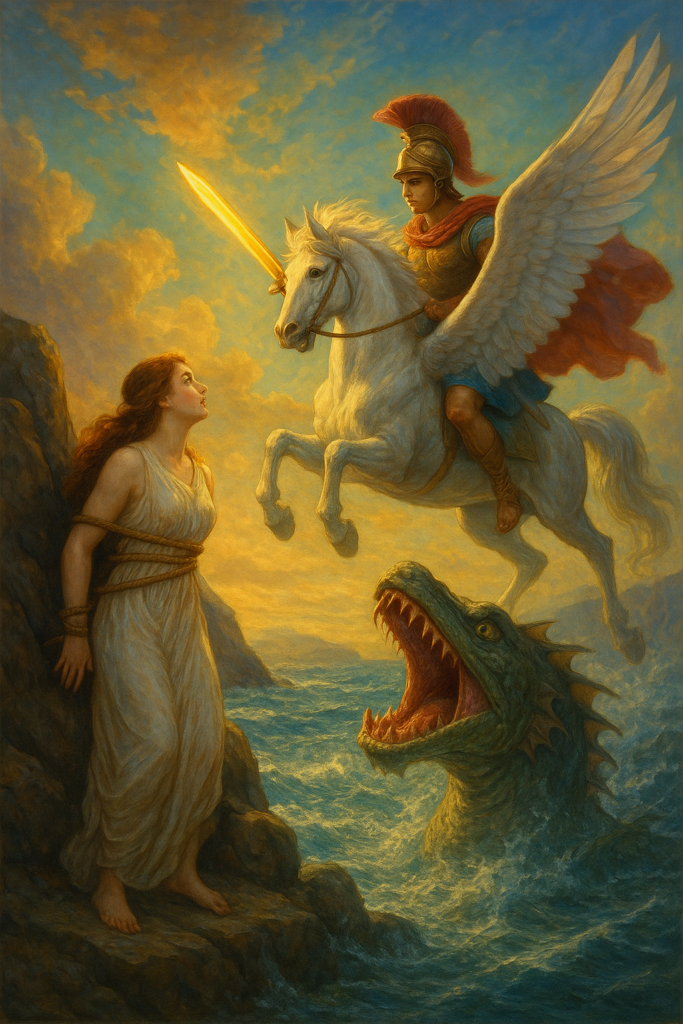
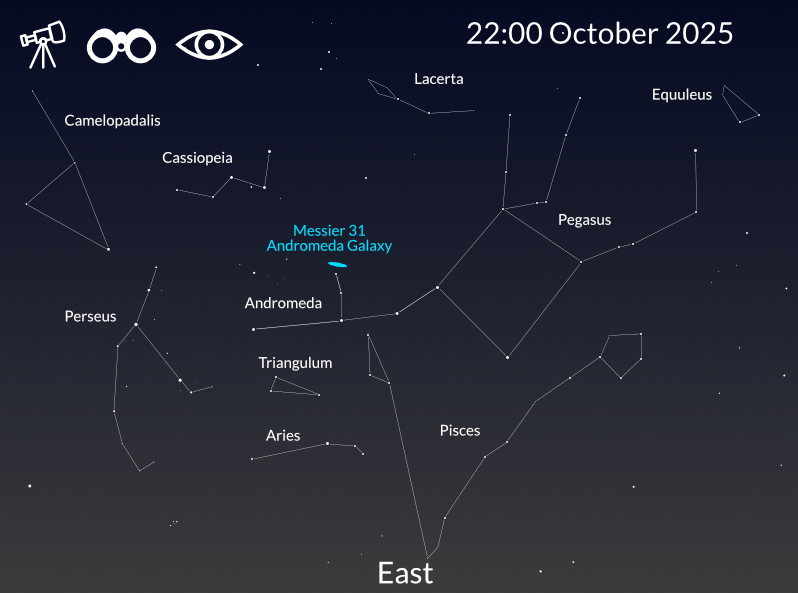
Three Galaxies in One Eyepiece!
If you have a wide-angle eyepiece, try and find three galaxies in the same field of view! Our neighbouring galaxy, Messier 31 or the Andromeda Galaxy, can be seen with the unaided eye from rural-suburban skies and darker, which makes it easy to locate and study through a telescope.
First, look for the square of Pegasus by facing south-east and looking at the midway point between the horizon and the zenith. You will see a huge square around 15 degrees in size – or the size of your outstretched hand with your index and pinkie finger extended. Look for the top left and corner of the square, looking for a handle that extends three stars to the east. Count two stars from the corner star in Pegasus and count two stars up – you will see a faint fuzzy oval. This is Andromeda Galaxy.
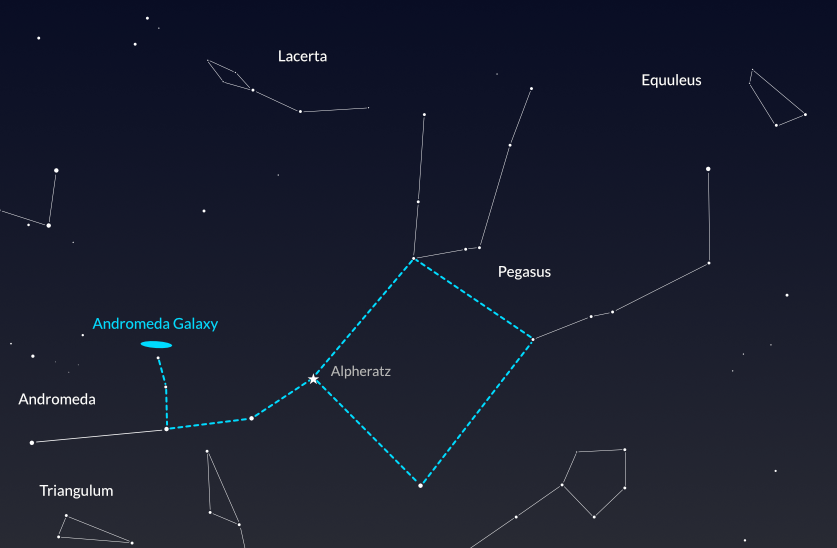
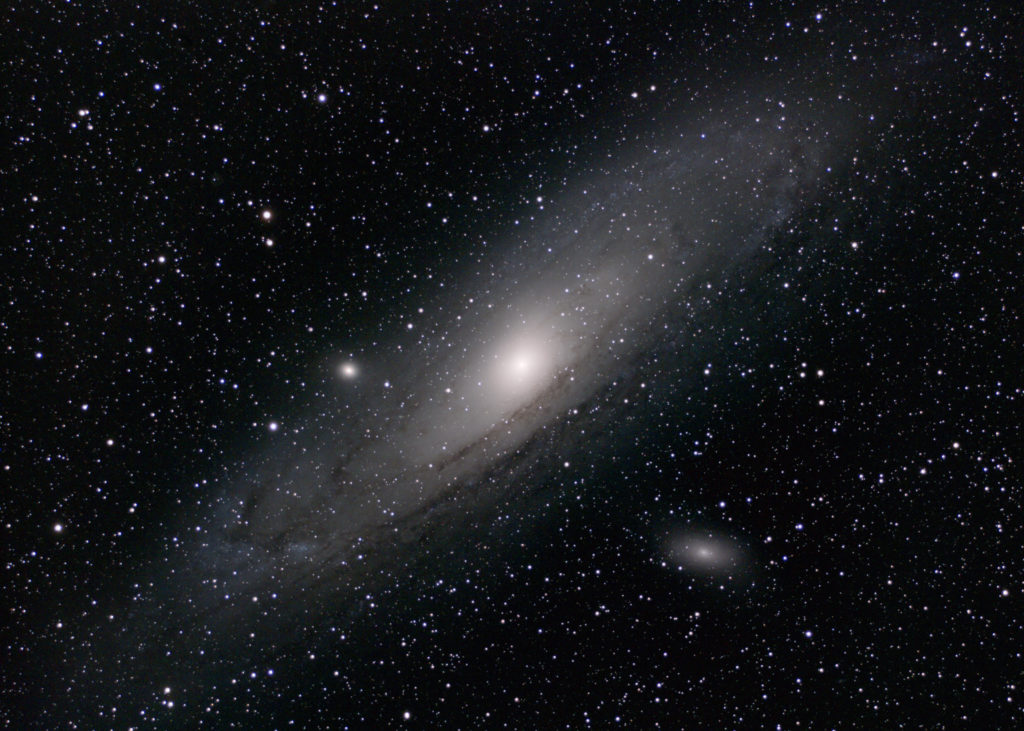
Move your telescope to see Andromeda and using a low power eyepiece, see Messiers 110 and 32 pop into view. If you see a hint of a dark swirl in Andromeda’s structure, you are seeing correctly – you are viewing one of Andromeda’s dust lanes! This will become more resolved in a darker sky and is also worth trying to spot in binoculars.
Our galactic neighbour lies a 2.5 million light years away and is contains twice as many stars as our own Milky Way, totalling at least 1 trillion stars. Andromeda Galaxy is also moving towards, which could cause a collision course with our own galaxy – it is thought this merge could happen in around 4.5 billion years and create a new, merged elliptical galaxy.
Torben Hansen, CC BY 2.0 https://creativecommons.org/licenses/by/2.0, via Wikimedia Commons
Messier 110 is a dwarf elliptical galaxy at around 2.7 million light years from earth. It is also known as a satellite galaxy of Andromeda, which means it is bound to the larger galaxy by gravity. Andromeda is thought to have 35 such satellite galaxies. Andromeda is 220,000 light years-wide, dwarfing Messier 110’s girth of 17,000 light years.
Credit:NOIRLab/NSF/AURA, CC BY 4.0 https://creativecommons.org/licenses/by/4.0, via Wikimedia Commons

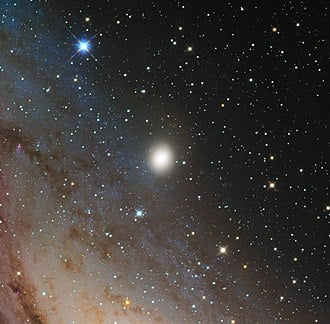
Messier 32 is the second galaxy. It is also a dwarf galaxy that orbits Messier 31 (Andromeda Galaxy). It is even smaller than Messier 110, being 6.5 light years in diameter. From our perspective, Messier 32 looks brighter but it has high surface brightness and a more compact core.
Fabrizio Francione, CC BY-SA 4.0 https://creativecommons.org/licenses/by-sa/4.0, via Wikimedia Commons
A Once-in-a Lifetime Comet
Since mid-August, Comet C/2025 A6 Lemmon started brightening, raising hopes for it becoming an unaided eye object during its closest approach on 21st October. At the time of writing, it is visible in binoculars in the constellation of Ursa Major, low on the north-western horizon when darkness falls. Use your binoculars to scan the area below Ursa Major’s feet and try and spot a faint smudge which may have a greenish tint. By the time of its closest approach, it will be passing through the constellation of Boötes.
These descriptions will change as the comet’s magnitude increases – their behaviour is difficult to predict so keep an eye on space news as things develop.
Take a look at the chart below to follow Comet Lemmon’s progress.
Dimitrios Katevainis, CC BY-SA 4.0 https://creativecommons.org/licenses/by-sa/4.0, via Wikimedia Commons
